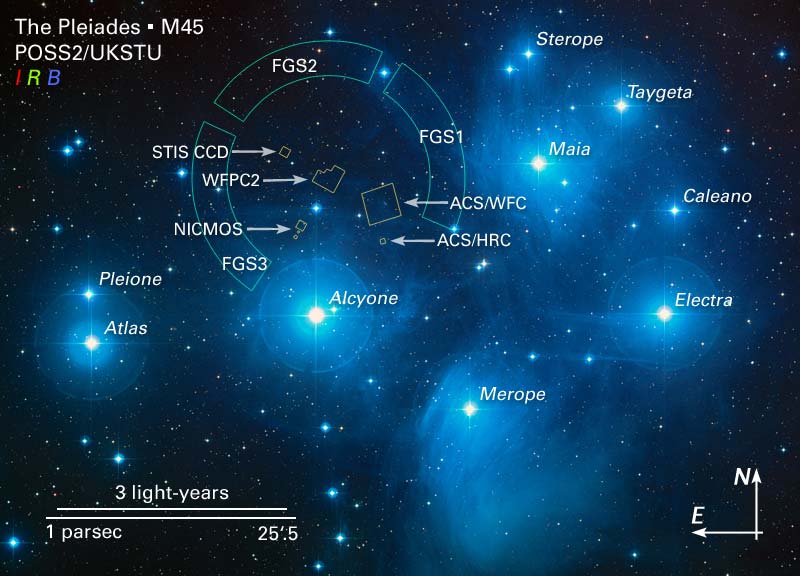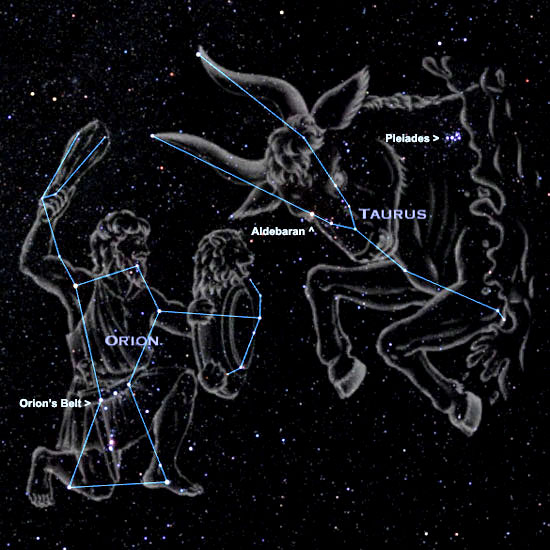The Mythology of Alcyone
- 17 March, 2016.
When you think about the great stars of the night Sky, one usually thinks of names like Aldebaran, Antares, Vega, Spica, and Sirius. However, there is a star cluster in the back of Taurus, the Great Bull constellation, that has a peculiar set of its own mythologies.
In our modern world, the word “myth” has a “false” or “outdated” connotation. I’m not quite sure why this is the case. If one is observant in our daily life, so much of the joy and richness of life happens when we are able to share our stories with one another. “How was your day?”, someone may ask you. Or when you are excited, “Hey! Did you hear what just happened!?”, and of course the evergreen tradition of the “bedtime story” that shapes so much of our childhood.
More importantly as adults, what are the stories we tell ourselves? What stories engage our imagination and intuitive faculties to help us make sense of this vast variety we call life? You may find, for example, that you believe a particular thing even though you don’t have any actual experience of it yourself. As a simple example, if you have never been to Japan, you have no direct experience that it exists. And yet, there it is! A blob in your head, with so many ideas and associations linked with it.
In a way, one could say, that a great deal of life is story. Stories that are handed down from one generation to the next. Some stories bring us joy, and some stories bring us sadness.
However, there are some stories that are so ingrained in our human-ness, that they have occurred amongst the various peoples of the earth and at different times in our history. These stories are powerful, and we refer to them as myths.
The fact that different cultures from all over the world and at different times in history looked up at the heavens and the stars and associated a similar story with them, is wondrous and mysterious for us to even consider. How is this possible when these peoples were not even remotely in communication with one another? Well, maybe our definition of communication needs some updating!
I want to focus in now on one particular myth. And that is to do with the star cluster called the Pleiades, and also its brightest star, Alcyone. I will present the myth from two different perspectives, the Hindu and the Ancient Greek, and we will learn something from what is common among them. For we know, that Truth is one, and that singular Truth takes shape and form and colour according to the mind it touches.
In Hinduism, the Pleiades are mentioned in a text called the Mahabharata (great story of Bharat, or what we call India) is a historical, scriptural, allegorical, and spiritual masterpiece of literature. It is more vast than the Iliad and Odyssey combined. It was penned about 500 BC, although the events and astronomical arrangements contained within it point to the history or stories of a people living thousands of years prior. That such a literary genius existed at a time is itself amazing.
The Mahabharata describes seven great original divine seers of men, or Rishis. They were the progenitors of the various human races, and gave to humanity divine wisdom in seven branches or paths to enlightenment, which I won’t go into here.
They are mentioned in an even more distant text, the Krishna Yajurveda, one of the three primary scriptural texts of Hinduism. Their names are change as each time epoch changes (called a Manvantara). The names of the sages for the current time epoch are: Kasyapa, Atri, Vashishta, Vishvamithra, Gautama, Jamadagni, and Bharadvaja. These seven sages were described as the stars of the Ursa Major or Great Bear constellation, and were said to signal the rising Sun (at the time the texts were written).
Their wives were given to the Pleiades star cluster, in the Taurus or Great Bull constellation in the sky. Chief among these was Arundhati, wife of Vashishta, whose power of chastity was so pure she could not even be imitated by another woman. This chief and brightest star of the seven sister stars of the Pleiades, is called Alcor or Alcyone coming from the Ancient Greek.
In Greek mythology, Alcyone was daughter of Aeolus the Greek god of the Winds. She was the wife of Ceyx, the King of Trachis, in central Greece. Alcyone and Ceyx had a love that the world admired and all aspired to emulate it. As with most Greek myths, such resplendent beings drew the wrath of the gods when they dared to compare themselves to the Zeus and Hera. Zeus punished them by causing Ceyx to drown while at sea as Alcyone watched on from the shoreline. Her grief and power was so strong that even the gods could not abide it. They sent her an apparition of her dead husband so that she could perform the last rites, after which she threw herself into the ocean to join him.
Alcyone or Arundhati therefore carry the significance that the brightest light of divine wisdom is chastity and abiding love in a relationship. This would apply to both a relationship between partner and spouse, and also the spiritual relationship between soul and Spirit. In a spiritual sense, when we keep our senses saturated with the experience of divine love, away from only sense and material pleasures, then the inner wisdom of those bodily and astral organs become vivified with light and shine with their own inner beauty and wisdom. The whole being then being still, the knowledge naturally flows and this gives a glow to the face and eyes even of the physical body. This glow cannot be imitated. It is magical and mystical. When our ego that was driving our love for so long, drowns in the sea of our love for the Higher, and for a more lasting reality within that relationship, the small form of the love we had only for ourselves, itself drowns and merges into the vast ocean of universal love.
Thus, Alcyone or Alcor or Arundhati, in the bawdy shoulders of the Great Bull constellation of Taurus, leads the other six stars in the cluster, just as pure love should lead our six senses into wisdom (the five senses plus the nebulous mind).



 Send Email
Send Email

